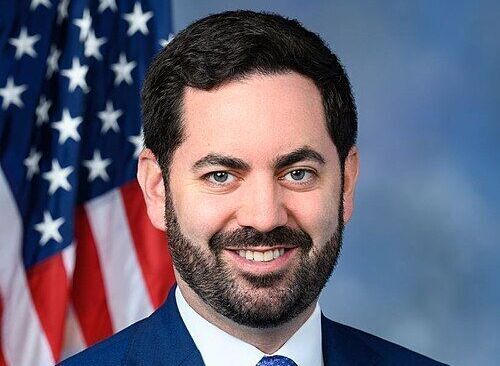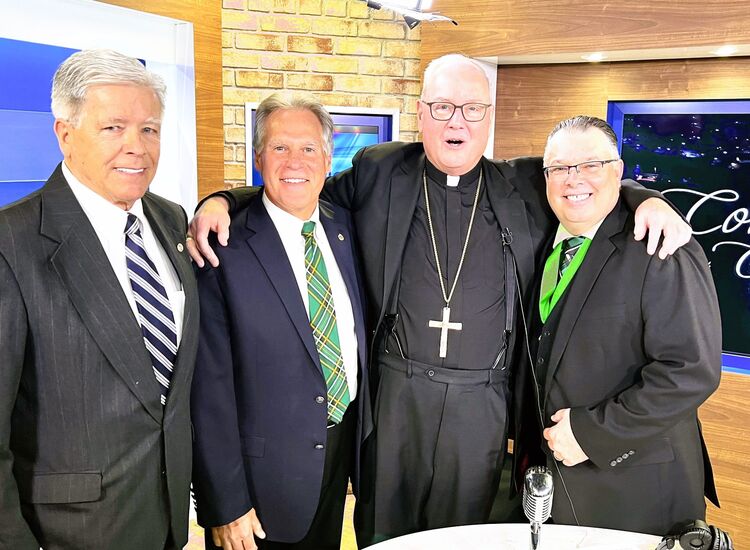By Peter McDermott

The man whose 1,300 opinions "literally transformed the legal landscape in which of all us live" has had a statue dedicated in his honor in his hometown in New Jersey.
William J. Brennan Jr. was born in Newark in 1906 to an Irish immigrant father who shoveled coal for a living, said Harvard professor of constitutional law Laurence Tribe, and went on to serve for 34 years on the United States Supreme Court.
In his keynote address at the dedication, Tribe told the large crowd outside the Essex County Hall of Records that they'd gathered "to remember the lovable human being that he was, but also as a call to all of us to continue on the path towards justice that he so admirably forged.
"Simply put," said the Harvard Law School mentor to President Obama, "he was the primary architect of the system of individual rights that we take for granted today."
Tribe continued: "The system was implicit in our constitution - that was our Constitution's genius - the system had barely been sketched by generations of framers before William Brennan came to our highest court.
"He had the unique vision to see the design whole and he exercised that artistry to build it into an enduring legal scaffold - a living sculpture for the ages," he said of the justice, the second of eight children of William J. Brennan Jr. and Bridget Agnes (née McDermott) Brennan, who were both from Frenchpark, Co. Roscommon.
"Before Justice Brennan took his place on the Supreme Court, the government could terminate an individual's welfare benefits with no explanation, with no opportunity to be heard, just cut you off. That changed with Justice Brennan's landmark opinion in the case Goldberg vs. Kelly, which stood for the audacious principle that poor people, too, deserve due process of law," said Tribe, who works in the Obama administration as special counselor for access to law.
"Before Justice Brennan's opinion in 1964 in a case called New York Times vs. Sullivan, newspapers across the nation were afraid to report on human rights abuses and on the events surrounding civil disobedience lest they would be financially crushed with libel suits, which had become a favorite weapon of segregationists in the South.
"Justice Brennan in that case held that you could not successfully challenge a news story without clear proof that it was deliberately or recklessly false. That liberated the New York Times and a lot of other news agencies to report on the illegal activities of public officials who tried desperately to sustain Jim Crow," Tribe said.
"Justice Brennan's was also the barely visible hand behind the Supreme Court's acknowledgment in a case called Griswold vs. Connecticut of a basic constitutional right to privacy," he added.
Extolling his "fundamental genius," Tribe said Brennan was the first justice who fully explained that the Constitution's text is much more that a laundry list of rights. The Bill of Rights goes beyond the specific guarantees that are listed there and "protects from government abridgment those equally fundamental personal rights that are necessary to make the guarantees fully meaningful."
Tribe said ahead of the unveiling of the statue by Thomas Jay Warren: "So as you go about your individual lives, what you take for granted is protected in large part because of the man whose statue we are going to be looking at."
In Brennan's view, he said, the Constitution was "the greatest tool we have to protect our fundamental rights and to form the basis for a fair and just society. It is a far more expansive and dynamic view than one that treats the Constitution as a kind of Dead Sea parchment, a merely static proclamation, frozen in time, against which another student of mine, the chief justice of the United States [John Roberts] said we merely judge balls and strikes.
"To Justice Brennan the law was not just a command, it was a promise -- it was a promise whose true fulfillment is equal justice. That promise consistently informed his many opinions on the court - the many cases in which he managed to get five justices to agree," he said.
"His writings for the Supreme Court held that due process of law requires proof beyond reasonable doubt in all criminal cases. You all know about the presumption of innocence? - that's Justice Brennan," he said.
Tribe said that one man-one vote wasn't a reality before Brennan. However, the New Jersey-born justice didn't always get his way. Said the Harvard professor: "Many of his stirring dissents were destined to become the law of the land; some of them still echo hauntingly to the present day and leave us with a good deal of unfinished."
Tribe related a family story about when Brennan fainted as a boy on his morning milk route. "A Good Samaritan went out of his way into the side lot where [he] had fallen into a drift and carried him home, despite the fact that the nation was then in the throes of the deadly influenza epidemic that had most people too scared even to approach a stranger," he said. "Justice Brennan taught [his daughter] Nancy that this stranger's helping hand was an example of what we all have to do to build a better community."
Nancy Brennan, the youngest of the justice's three children, spoke on behalf of the family at the dedication ceremony. Former New Jersey Gov. Brendan Byrne, who also has roots in County Roscommon, Irish Deputy Consul General Breandán Ó Caollaí, Newark Mayor Cory Booker, Essex County Executive Joseph DiVincenzo and former Star Ledger reporter Guy Sterling, who conceived of the idea for the statue, were among the other speakers.
In her speech remembering her father, Brennan, who is executive director of the Rose Fitzgerald Kennedy Greenway in Boston, thanked the members of the orchestra from Harriet Tubman School. "How did you know that Canon in D was his favorite?" she said, referring to Pachelbel's iconic work. As it happened, "My Favorite Things" from the "The Sound of Music" was the orchestra's other selection.








